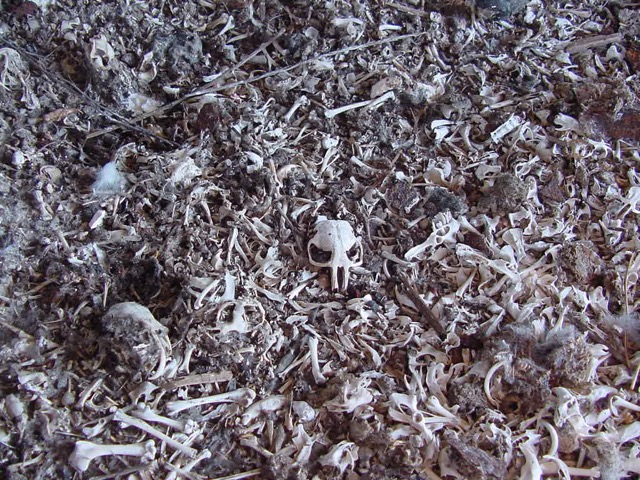by Joe Eaton

Photo by Maggie Rufo
(Full article from RATS Tales Fall 2016)
In the film Jurassic Park, dinosaur blood in the guts of a mosquito trapped in amber from the Dominican Republic was the key to resurrecting the giant reptiles. In real life, a recent discovery in that same Caribbean country helped scientists solve an evolutionary mystery. The evidence was provided not by a mosquito, but a barn owl.
In a pile of bones in a 700-year-old owl roost, an international team identified the skull of an extinct chipmunk-sized mammal called Nesophontes paramicrus. Its lineage outlived the dinosaurs, but its position among mammals was unclear. DNA analysis now places it near the roots of the placental-mammal family tree, near the enigmatic island-dwelling solenodons (among the few venomous mammals) and a few removes from moles and hedgehogs.
In an article in the journal Molecular Biology and Evolution, Selina Brace of the Natural History Museum, London, and her co-authors report finding “a rich surficial accumulation of small vertebrate skeletal elements” in Cueva de Bosque Humido, a limestone cave in Los Haitises National Park on the northeastern corner of the island of Hispaniola, shared by the Dominican Republic and Haiti. Anyone who has ever cleaned out a barn owl nest box can visualize the scene. Along with three Nesophontes species, the bones represented two extinct rodents (including a so-called edible rat), bats, birds, and reptiles—a snapshot of the island’s pre-Columbian fauna.
This is not the first time owls have done their bit for science. An African barn owl pellet yielded the skull of an undescribed gerbil species. Older leftovers are troves of small-mammal fossils, otherwise seldom preserved because of their size and fragility. A fossil owl-prey assemblage at House Mountain in central Arizona has been assigned to the Pliocene Epoch, at least 2.5 million years ago.
Most raptors regurgitate pellets, the indigestible residue of their prey compacted in the gizzard, then coughed up. Hawk pellets rarely contain intact bones; owl pellets are more informative. Since the stomach acids of barn owls are weaker than those of typical owls, the bones they eject are well-preserved and easier to identify.
Samuel Turvey, who found the bones, says they were most likely left by barn owls—either the widespread common barn owl or the endemic ashy-faced owl, both of which still use the island’s caves. A third species, the extinct Hispaniolan giant barn owl, took monkey-sized prey and may have survived into the 18th century, long after the Spanish conquest destroyed the native Taino people and much of the indigenous wildlife.
